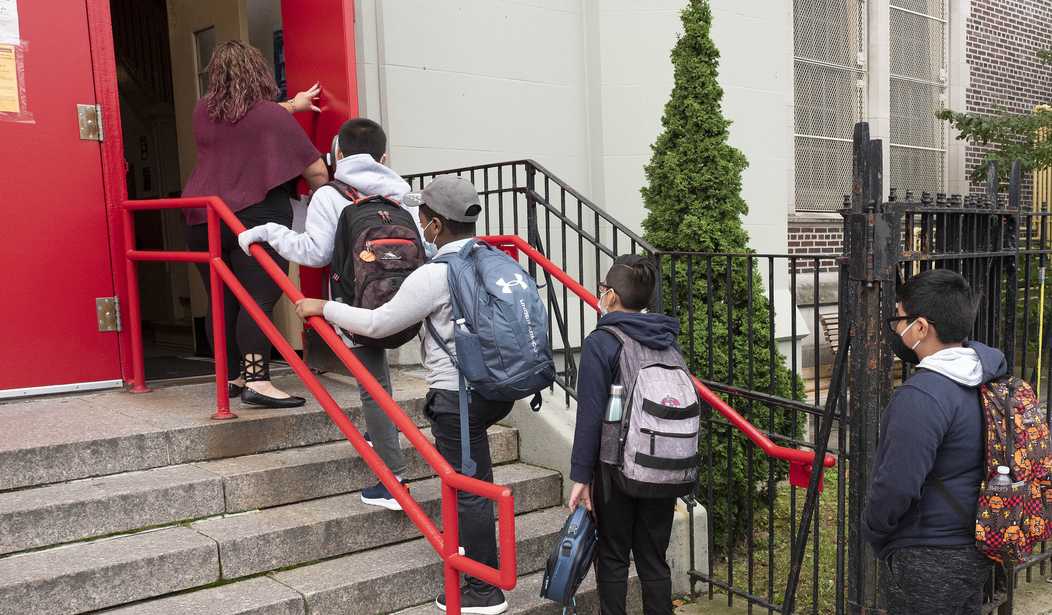Congrats to Stanford Law and Policy Lab. They have identified the problem but are pursuing an epic failure with their solution. It seems the top-tier school has finally figured out that tying children to failing schools by their zip codes systematically oppresses black and brown children. President Trump knew that when he called school choice the civil rights issue of our time. However, Stanford is taking the standard approach of over-educated leftists. As is typical, they detected disparate outcomes in a system they are evaluating, they blamed it on racism and their first instinct was to lower the standards.
Their practicum is The Youth Justice Lab: Imagining an Anti-Racist Public Education System. Perhaps they would like to engage in a deeper analysis. Recently I wrote about a teen in Baltimore who only passed three classes in his entire high school career. Even more shocking, with a GPA of 0.13, his class rank was 62 out of 120 students The mayor of Baltimore City is black, the city council is extremely diverse, and the CEO of Baltimore City Schools is also black. The school district’s average teacher salary is $62,000, and its per-student spending was the third highest in the nation in 2019.
This overall picture of well-funded schools with a minority-led city government and school leadership is common in underperforming urban school districts. These districts have financial resources, and it would be hard to imagine their leadership’s primary goal is to hold students down based on racial identity. Instead, schools and individual student school performances are a multi-factor analysis. It is not as simple as assigning a motive, as Stanford Law has.
Luckily, Stanford University has one of the most astute students on inequity in education at the Hoover Institution. Dr. Thomas Sowell wrote a data-filled book called Charter Schools and Their Enemies. He demonstrates that charter schools, free from mandates from the local school board, can operate in the same building as a public school and produce significantly better results with predominantly minority populations. He spends quite a bit of time evaluating Success Academy, a charter school system comprised of 47 schools in New York City that enroll approximately 20,000 students.
Success Academy enrolls students through a lottery in underserved neighborhoods. In the last year that students in New York took standardized tests, Success Academy students had the state’s highest scores. Of the more than 7,000 students who took the exams, 99% passed the math portion, with 86% achieving the highest score, and 90% passed the English and language arts portion, with 41% achieving the highest score. The student population that took the tests was diverse and had an average household income of less than $50,000 in one of the world’s highest cost-of-living cities.

The district significantly outperformed students from much wealthier and less diverse school districts. Their most vulnerable students, those with IEPs, English-language learners, and homeless children, outperformed New York City public schools at astounding rates. For example, 86% of Success Academy’s English-language learners passed the English and language arts exam. Only 9% of those students passed the test in New York City public schools.
To solve disparate outcomes, New York Mayor Bill de Blasio and his administration have employed many of the ideas the Stanford website is hinting at. They have lowered standards, eliminated achievement testing for gifted and talented programs, and use equity, the typical “anti-racist” solution, as a guiding principle. Stanford is highlighting a similar problem set to address disparate outcomes:
Perhaps no institution has reproduced racial hierarchy in the U.S. more than our public education system. From state-sponsored racial segregation of schools to the more subtle, but no less insidious racially segregated academic placements (e.g., special education, advanced placement) to exclusionary school discipline policies to ostensibly “meritocratic” testing and grading policies and beyond, public schools have created and perpetuated racial hierarchy, despite the promise that schools should help all children achieve the American Dream.
Success Academy has taken the opposite approach. They set high standards for student achievement, student behavior in and out of school and create programs and partnerships with parents to teach them how to best support their child’s success. “Meritocratic” testing results prove the model works, regardless of race, ethnicity, socioeconomic status, and disability.
The soft bigotry of low expectations is evident in Stanford’s approach and New York City public schools’ approach. Both promote the idea that we should not expect minority children to meet behavioral or academic standards to address disparate outcomes. What they are proposing is lowering the bar or reducing services to all children. The 58 students in Baltimore will not leave school with more skills if you lower the standards. New York City schools’ performance also continues to decline with an increasing number of social justice solutions.
Organizations that are genuinely interested in improving public education should spend some time understanding what CEO Eva Moskowitz, who runs Success Academies, and other programs like it are doing. They should encourage policies that promote competition and innovation by reducing the number of burdensome local, state, and federal regulations that public schools are forced to operate under. Then let parents choose the environment that will best serve their child based on results.










Join the conversation as a VIP Member